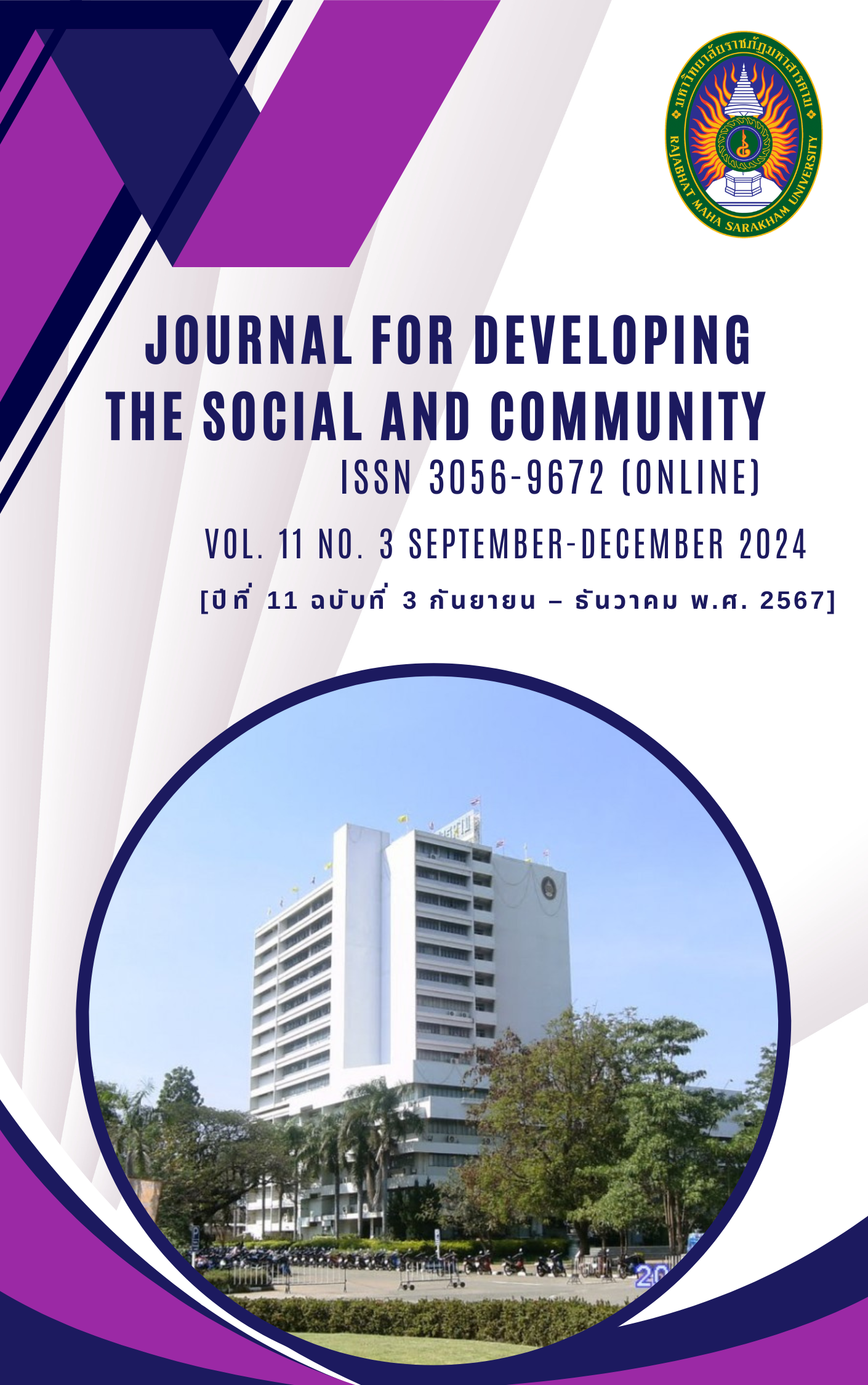Analysis: Linguistics Expressed by the Buddha in Dhamma Language
Keywords:
Linguistics, Dharma Language, BuddhaAbstract
This article aims to reflect the dissemination of Buddhism by the Buddha in the Tripitaka through two forms of linguistics: language that directly conveys meaning according to the literal text and language that conveys meaning implicitly. The Buddha used language that was not attached to or revered any one language as a medium, but instead, he used the local languages as mediums, such as Magadhi, Pali, and Sanskrit. This was done through four methods of Dhamma teaching: explaining clearly, motivating to see the truth, engaging style, and being entertaining. These were based on the context of answering four types of questions: questions that should be answered directly, questions that should be counter-questioned before answering, questions that need to be analyzed before answering, and questions that should be set aside. Thus, linguistics is a powerful tool in the study of Buddhism, which helps us to understand the scriptures, interpret history, compare religions, study Buddhist philosophy, and communicate Buddhism effectively and comprehensively from the traces of history to the present. The forms and processes of linguistic study can categorize the perspectives of linguistics into at least three aspects: historical linguistics, theoretical and applied linguistics, and context-dependent and context-independent linguistics. Linguistics is both a science and an art that studies languages in various aspects, encompassing the structure, nature, and usage context of language.
References
Arunmanakul, W. (2020). The Science of Language: History and Development. Department of Linguistics, Faculty of Arts: Chulalongkorn University.
Bloomfield, L. (1983). An Introduction to the Study of Language: New Edition. Amsterdam: John Benjamins Publishing. ISBN 978-90-272-8047-3.
Buddhadasa Bhikkhu. (1994). Human Language, Dhamma Language: Let’s "Consume"
Time Together. Bangkok: Sukhapabjai.
Chorphokaudom, P. (2022). An Analysis of the Strategies of Buddhist Propagation by the Buddha in the Tripitaka. Doctoral dissertation: Mahachulalongkornrajavidyalaya University.
Department of Linguistics, Faculty of Arts, Chulalongkorn University. (2024). What is Linguistics? Retrieved May 1, 2024, from https://www.arts.chula.ac.th/ling/whatislinguistics/.
Gethin, R. (2008). Sayings of the Buddha: New Translations from the Pali Nikayas. Oxford: Oxford University Press.
Halliday, M. A. K., & Webster, J. (2006). On Language and Linguistics. Continuum International Publishing Group.
Hotcourses Thailand. (2024). Getting to Know Linguistics. Retrieved May 1, 2024, from https://www.hotcourses.in.th/study-abroad-info/subject-guides/studying-linguistics/.
Inchan, D. (2018). Exhibition "Anthropology and Development through Time". Bangkok: Sirindhorn Anthropology Centre Library (Public Organization).
Kaewtep, K. (2000). Mass Communication: Theory and Study Approach (2nded). Bangkok: Chulalongkorn University.
Mahachulalongkornrajavidyalaya University. (1996). The Thai Tipitaka Edition. Bangkok: Mahachulalongkornrajavidyalaya University Press.
Mahachulalongkornrajavidyalaya University. (1996). The Pali Commentary Edition. Bangkok: Mahachulalongkornrajavidyalaya University Press.
Mahamakut Buddhist University. (1991). The Tipitaka with Commentary: 91-Volume Set. Bangkok: Mahamakut Buddhist University Press.
Meesook, W. (2016). Buddhism and the Study of the Pali Language. Bangkok: Thammasat University.
Phra Maha Vuddhikaro, S. (2005). Language and Interpretation in Buddhism. Retrieved May 1, 2024, from https://www.mcu.ac.th/article/detail/51.
Phra Dhammapitaka (P.A. Payutto). (1996). Language Communication for Realizing the Truth. Bangkok: Buddhist Foundation Publishing.
Photinantha, S. (1970). The History of Buddhism. Bangkok: Banakarn.
Saengsai, P. & Prasri, S. (2020). Buddhist Language and Communication. Journal of Economic and Social Review, 3(1), 14–23.
Suzuki, D. T. (1934). An Introduction to Zen Buddhism. New York: Grove Press Inc.
Walshe, M. (1995). The Long Discourses of the Buddha: A Translation of the Digha Nikaya. Boston: Wisdom Publications.
Wongsurawat, K. (2020). Pali Language: Communication and Interpretation in the Tripitaka. Bangkok: Siam Journal.
Downloads
Published
How to Cite
Issue
Section
License
Copyright (c) 2024 Journal for Developing the Social and Community

This work is licensed under a Creative Commons Attribution-NonCommercial-NoDerivatives 4.0 International License.
Articles that are published are copyrighted by the authors of the articles







